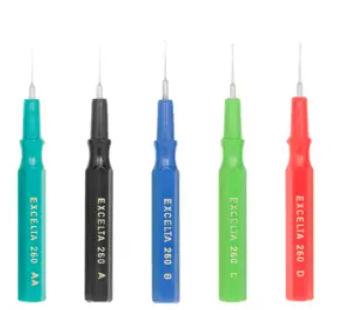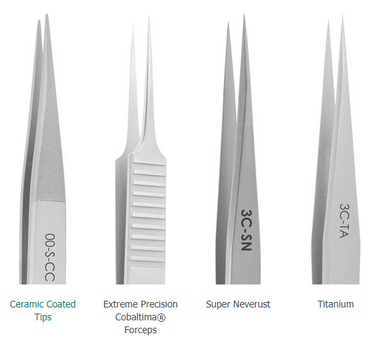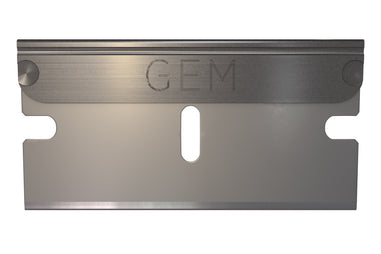- No products in the cart.
Nitinol, a shape memory alloy, is widely used in various industries for its unique properties. When it comes to cutting Nitinol wire, there are specific challenges and considerations that need to be addressed to achieve clean and precise cuts. In this comprehensive guide, we will explore the key factors to ensure successful Nitinol wire cutting. We will delve into troubleshooting tips and common challenges faced during the cutting process, equipping you with the knowledge to overcome obstacles and achieve optimal results.
1. Understanding Nitinol Properties:
Before attempting to cut Nitinol wire, it is crucial to understand its properties. Nitinol is a combination of nickel and titanium, known for its shape memory and superelasticity. These properties make Nitinol wire resistant to deformation and highly elastic. However, they also pose challenges during cutting. Nitinol tends to work-harden, making it harder to cut as the process progresses. It is essential to account for these characteristics when developing a cutting strategy.
2. Choosing the Right Cutting Tools:
The choice of cutting tools is critical for successful Nitinol wire cutting. Due to its unique properties, Nitinol wire requires specific tools designed for high-strength materials. Carbide or diamond-coated tools from Excelta are commonly recommended, as they offer superior hardness and durability. Additionally, selecting the appropriate blade geometry and edge preparation is crucial to achieve clean cuts and minimize burrs or deformation. Consult with tooling experts or manufacturers to ensure you have the right tools for the job.
3. Addressing Heat Generation:
Heat generation is a significant challenge when cutting Nitinol wire. As Nitinol is highly temperature-sensitive, excessive heat during the cutting process can alter its properties and result in poor quality cuts. To minimize heat generation, it is recommended to use a high-quality lubricant or coolant specifically designed for cutting Nitinol. These fluids help dissipate heat and reduce friction, ensuring the wire remains within the desired temperature range.
4. Overcoming Work-hardening:
Nitinol tends to work-harden during the cutting process, causing the wire to become progressively harder to cut. To overcome work-hardening, it is essential to optimize cutting parameters, such as feed rate and cutting speed. Finding the right balance between these parameters can prevent excessive work-hardening and maintain a consistent cutting performance. Experimentation and testing are often required to determine the optimal cutting parameters for Nitinol wire.
5. Minimizing Burr Formation:
Burr formation is a common challenge when cutting Nitinol wire. Burrs can affect the functionality and aesthetics of the final product. To minimize burr formation, it is crucial to choose the appropriate cutting speed and feed rate combination. Higher speeds with lower feed rates can help reduce burr formation. Additionally, using tools with sharp cutting edges and minimizing tool wear can also contribute to cleaner cuts. Regular inspection and maintenance of cutting tools are essential to ensure optimal performance.
6. Ensuring Clean and Consistent Cuts:
Achieving clean and consistent cuts in Nitinol wire requires attention to detail and careful execution. Regularly inspect and maintain cutting tools, optimize cutting parameters to prevent work-hardening, and minimize heat generation. It is also essential to consider post-cutting processes, such as deburring or heat treatment, to ensure the desired final product quality.
Conclusion:
Nitinol wire cutting presents unique challenges due to the material's properties, such as work-hardening and heat sensitivity. By understanding Nitinol properties, choosing the right cutting tools, addressing heat generation, overcoming work-hardening, minimizing burr formation, and ensuring clean and consistent cuts, you can overcome these challenges and achieve successful Nitinol wire cutting. Experimentation, continuous improvement, and collaboration with tooling experts will help optimize the cutting process and ensure high-quality results. With the right techniques and attention to detail, you can harness the benefits of Nitinol wire while maintaining precision and efficiency in your cutting operations.
For over 40 years, Lab Pro Inc. has been committed to delivering the highest quality nitinol cutting tools such as Excelta carbide insert cutters, lab supplies, lab equipment, reagents, distance learning kits, and cleanroom PPE apparel. Renowned by global medical device companies and laboratories, we ensure exceptional quality in every product. Contact us online or call 888-452-2776 to learn more. Discover top-notch lab supplies and elevate your experiments today!












































